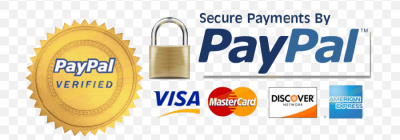The e-learning industry is growing rapidly, and platforms like Udemy and Teachable have revolutionized online education. Building your own Learning Management System (LMS) can be a profitable venture if executed correctly. Whether you aim to create a marketplace for multiple instructors or a private training portal, this guide will walk you through the key steps.
Do you want to build a LMS website ? We can offer services for web design and web development and help you build this type of website. Contact us and lets discuss. Our prices for a LMS website start at 4,999$
Lets get in touch and discuss, otherwise you can learn what are the steps of building such website.
Step 1: Define Your LMS Niche and Target Audience
Before developing your LMS, it’s crucial to define your niche and target audience. Udemy offers courses on virtually any subject, while Teachable focuses on empowering individual instructors and businesses to sell courses. Your LMS should cater to a specific need or audience to stand out from the competition. Understanding who will use your platform and what features they require will help you design a more effective product.
Consider These Factors:
- Who is your target audience? – Students, professionals, corporate teams, or hobbyists?
- What type of courses will be offered? – Academic, business skills, coding, personal development, etc.
- Will your platform support multiple instructors? – Or will it be a single-instructor system?
- Monetization strategy? – Subscription model, one-time payments, or freemium features?
Defining your LMS niche early ensures you build the right features and attract the right users.
Step 2: Choose the Right Technology Stack
Choosing the right technology stack is essential to ensure your LMS is scalable, secure, and user-friendly. Depending on your technical expertise and budget, you can opt for a custom-built solution or a pre-built platform.
Recommended Tech Stack:
- Frontend: React, Vue.js, or Angular for an interactive UI.
- Backend: Node.js, Ruby on Rails, Django, or Laravel.
- Database: PostgreSQL, MySQL, or MongoDB to store user data and course content.
- Hosting: AWS, DigitalOcean, or Firebase for cloud deployment.
- Video Streaming: AWS S3, Vimeo API, or Wistia for course videos.
- Payment Processing: Stripe, PayPal, or Razorpay for handling transactions.
If you prefer a no-code approach, platforms like WordPress (with an LMS plugin such as LearnDash) can be an alternative.
Step 3: Design a Seamless User Experience (UX)
A great user experience is crucial for keeping learners engaged and making course creation easy for instructors. The interface should be intuitive, allowing users to navigate courses, track progress, and interact with instructors effortlessly.
Essential UX Features:
- Easy Course Discovery – Users should be able to browse courses via categories, search, and filters.
- Simple Course Creation – Instructors should have an intuitive dashboard to upload content, create quizzes, and manage students.
- User Progress Tracking – Learners should have dashboards showing completed lessons, certificates, and upcoming content.
- Responsive Design – The platform should be mobile-friendly and work seamlessly on different devices.
- Interactive Features – Live Q&A, forums, and direct messaging can enhance user engagement.
Prioritizing UX ensures a smooth experience for both instructors and learners.
Step 4: Implement Key Features
To compete with established platforms, your LMS needs to include essential and advanced features that enhance both teaching and learning experiences.
Must-Have Features:
- User Registration & Authentication – Secure sign-up via email, Google, or social media.
- Course Management – Instructors should be able to create, edit, and manage courses effortlessly.
- Multimedia Support – Allow instructors to upload videos, PDFs, audio files, and quizzes.
- Student Progress Tracking – Progress bars, certifications, and gamification elements.
- Payment Integration – Enable course purchases through multiple payment gateways.
- Discussion Forums – Provide spaces for students to ask questions and interact.
- Live Streaming & Webinars – Support for real-time classes and student engagement.
By incorporating these features, your LMS will provide an enriching experience for users.
Step 5: Ensure Content Security and Compliance
Security is vital in an LMS, as users pay for premium content and expect their data to be safe. Compliance with regulations is also crucial if your platform operates internationally.
Ways to Ensure Security:
- Secure User Authentication – Implement multi-factor authentication (MFA) and strong password policies.
- Content Protection – Use DRM (Digital Rights Management) to prevent unauthorized course distribution.
- GDPR & Data Compliance – Ensure user data protection measures align with GDPR, CCPA, and other regulations.
- Regular Backups – Keep automatic backups of course data and user progress.
- Fraud Detection Systems – Monitor transactions and user behavior for suspicious activity.
Ensuring security and compliance will build trust among your users and protect your platform from potential legal issues.
Step 6: Develop a Monetization Strategy
Your LMS needs a solid business model to be financially sustainable. There are multiple monetization strategies to consider.
Monetization Options:
- One-Time Course Purchases – Users pay a one-time fee per course.
- Subscription Plans – Monthly or yearly subscription models for unlimited access.
- Freemium Model – Offer free courses with paid premium content.
- Corporate Training – Offer enterprise solutions for corporate training programs.
- Affiliate Partnerships – Work with educational influencers to promote courses.
A strong monetization strategy ensures long-term revenue and platform growth.
Step 7: Market Your LMS Effectively
Launching your LMS is just the beginning. You need a solid marketing strategy to attract instructors and students to your platform.
Effective Marketing Strategies:
- SEO & Content Marketing – Create blogs, video tutorials, and optimize course pages for search engines.
- Social Media Campaigns – Promote courses through LinkedIn, Facebook, and Twitter.
- Influencer Collaborations – Work with educators and industry leaders to boost credibility.
- Paid Advertising – Use Google Ads and social media ads to drive traffic.
- Referral & Affiliate Programs – Encourage users to refer new students and earn rewards.
A well-executed marketing plan can establish your LMS as a go-to platform for learning.
Step 8: Continuously Improve and Scale
Your LMS should evolve based on user feedback and industry trends. To remain competitive, consider implementing new features and expanding your offerings.
Scaling Strategies:
- Analyze User Behavior – Use analytics to understand course engagement and improve features.
- AI-Based Recommendations – Implement AI-powered course recommendations to enhance user experience.
- Mobile App Development – Expand your reach by launching iOS and Android apps.
- Partnerships & Integrations – Collaborate with institutions, universities, or certification bodies.
- Community Building – Create discussion groups, mentorship programs, and networking opportunities.
Continuous improvement will ensure that your LMS remains relevant and competitive.
Conclusion
Building an LMS like Udemy or Teachable requires a combination of strategic planning, robust technology, and user-friendly features. By defining your niche, selecting the right tech stack, ensuring security, implementing must-have features, and executing an effective marketing strategy, you can create a successful e-learning platform. Focus on continuous innovation and customer feedback to stay ahead in the growing online education industry.
Want to build a lms website ? Contact us and let us build it for you.








